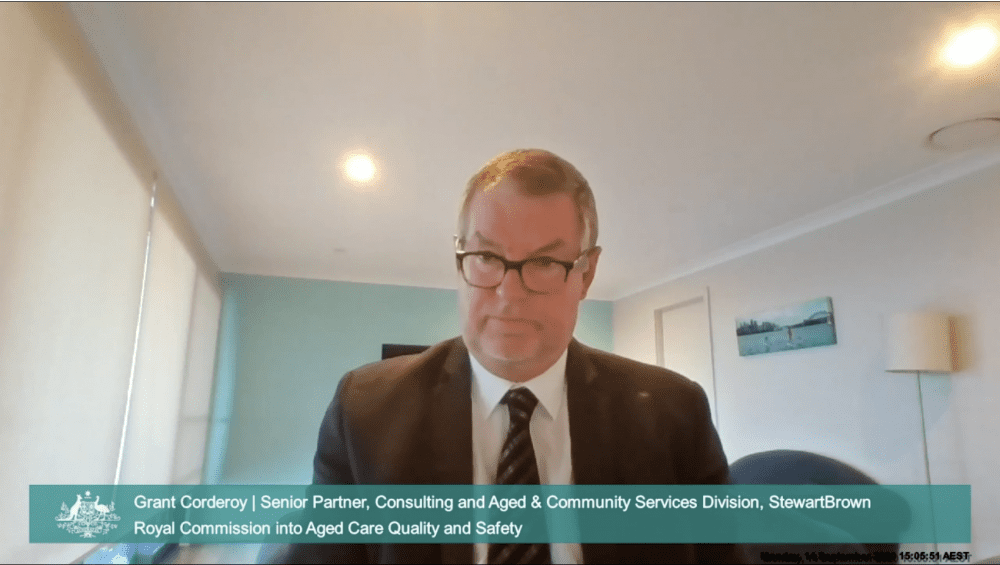
A leading aged care accountant has supported a proposal that providers be forced to show that taxpayer funding intended for the care of aged care residents is actually spent on care.
The Royal Commission into Aged Care Quality and Safety heard that Grant Corderoy, partner with aged care accountancy firm, StewartBrown, could see “no problem” with the commission’s proposal that providers “prove they spent the amounts provided for the purpose of care on care, including staffing”.
Mr Corderoy said providing the information should not pose any additional administrative burden on providers because the data is easy for them to access.
He said providers would be “happy” to have additional “collective information” about the sector, as a result of providing the information to the government.
Counsel assisting the royal commission, Peter Gray QC, said providers’ funding would depend on them supplying the information.
Mr Corderoy also talked about a “sweet spot” for aged care providers: homes with between 60 and 90 beds.
He said newer aged care homes that are better designed are significantly more efficient and profitable.
“What we’re finding is that the design of homes is becoming far more critical as far as their efficiency and profitability.”
Large, older-style homes with long corridors mean that staff have to travel longer distances, and services – catering, cleaning, laundry – also have to go further to be delivered.
Homes with a “cocoon-shape design” and a central lift, for example, mean “direct care delivery can be much more efficient, [there is] less travel between rooms. [They are] more able to attend to residents’ needs.”
These more efficient designs mean staff are able to provide more hours of care, but for lower cost to the provider.
Mr Corderoy said aged care funding has not kept pace with inflation.
Aged care funding has increased by 1.5 per cent per annum, at most, in recent years, while wages, which make up 80 per cent of aged care providers’ costs, have risen by around 2.5 to 3.25 per cent per annum.
“ACFI hasn’t…. kept pace, significantly… and this is putting far greater pressure on the ability of providers to provide more direct care hours,” Mr Corderoy said.
Investment in the sector is declining due to regulatory uncertainty and low returns, Mr Corderoy said.
“It’s fair to say that investment in the sector… has deteriorated.”
“New investment into the sector [is] very limited.”
“The appetite on both for-profit and not-for-profit for investing into the sector… is not great at the moment and in large part because the return on investment is poor, and… because of the volatility.”
“It’s very hard to have a strategic plan or investment strategy when you’ve got so many things that could occur. Could we have a new funding instrument, for example? What’s going to happen with the pricing structure? What’s going to happen as a result of the Royal Commission? So there’s too many variables to allow for a positive impact on investment,” Mr Corderoy told the royal commission.
My comment should read “Yes managers SHOULD have nursing qualifications in aged care……”. My phone causes typographic errors.